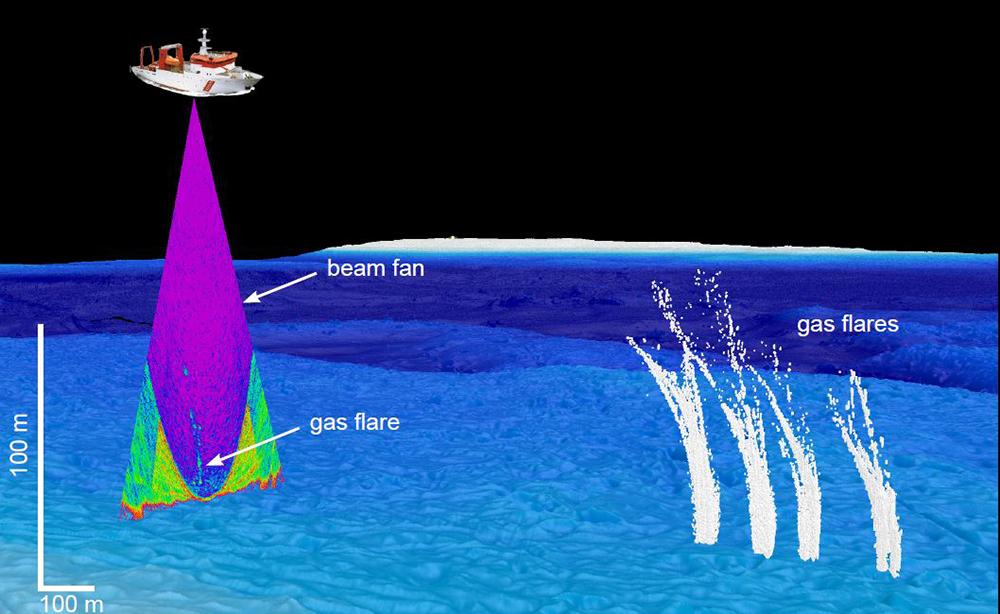
Norwegian scientists have now compiled a scientific paper on natural gas seeps from the seabed of the Norwegian Sea, the Barents Sea, and the Fram Strait in the Norwegian Journal of Geology. The data for the article is based on information collected over many years from the Mareano mapping program.

5,000 gas emissions
"Natural gas seeps occur much more frequently than we believed just 10-12 years ago, especially in the Barents Sea," says senior scientist and marine geologist Terje Thorsnes of the Geological Survey of Norway (NGU).
"An important reason for this might be the presence of large fault zones on the seabed and a complex geological history characterized by multiple ice ages and a significant uplift of the sea floor", he adds.
More than 5,000 gas seeps have been mapped by the Mareano program in the Barents Sea, the Norwegian Sea, and on the central Norwegian shelf. These gas emissions contribute to the release of greenhouse gases, may pose landslide risks on the seabed, but can also form the basis for unique ecosystems that feed on the gas.

Oil seepage
The gas columns found in Molloydypet in the Fram Strait between Svalbard and Greenland are potentially the world's tallest. Advanced sonar readings show a gas emission from around 3,900 meters deep standing at an impressive height of approximately 3,355 meters. Another gas column from a depth of 3,500 meters is nearly 1,800 meters high.
"In 2022, the University of Bergen (UiB) and NGU deployed a remotely operated underwater vehicle (ROV) and observed that oil was also seeping out with the gas," explains Terje Thorsnes.
Molloydypet, at its deepest, is 5,569 meters. It formed 30-40 million years ago and is the deepest basin in Norwegian waters. The seabed surrounding Molloydypet is approximately 2,200 meters deep.
Appearing as "flares"
Gas seeps from the seabed can be detected by sending sound waves in a fan pattern towards the seabed using a multibeam sonar.
"Natural gas seeps often appear as 'flares' that can be recognized and classified. Sonar has long been used in fisheries research and harvesting, but for a long time, we had trouble distinguishing between fish shoals or dense plankton swarms from gas leaks. New equipment, along with improved interpretation and modeling, has changed this," says Terje Thorsnes.
Ref.: Terje Thorsnes m. fl.: Gas seeps in Norwegian waters – distribution and mechanisms. NJG, volum 103.
